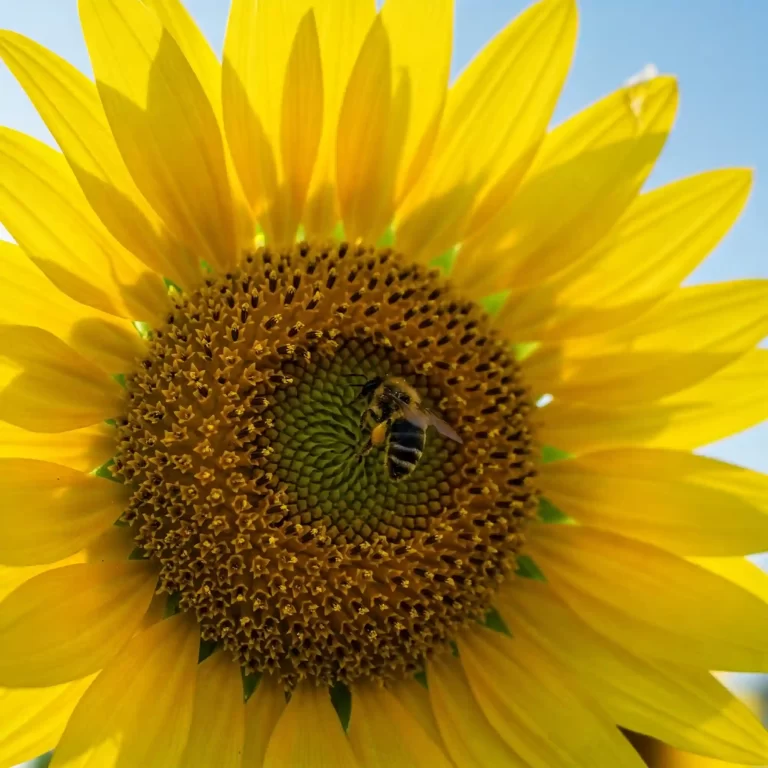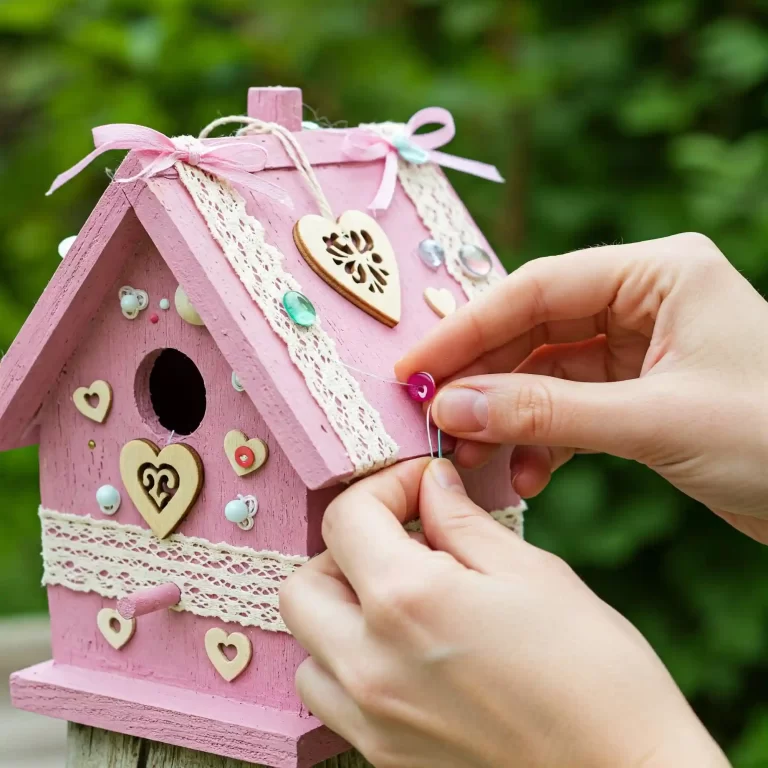| – Fuzzy plants are plants that have fuzzy, soft, or velvety leaves or flowers. |
| – Fuzzy plants can add texture, contrast, and interest to your garden. They can also provide benefits such as attracting pollinators, repelling pests, or tolerating drought. |
| – Some of the most popular and beautiful fuzzy plants are lamb’s ears, dusty miller, iron cross begonia, angel’s hair artemisia, hyacinth, and chenille plant. |
| – Fuzzy plants have different growing and care requirements depending on their type, but they generally prefer well-drained soil and full sun. |
| – Fuzzy plants are easy to propagate by seeds, cuttings, or division. They are also easy to use in your garden design, as they can be planted in groups, mixed with other plants, or used as ground covers, borders, fillers, or containers. |
Have you ever touched a plant that felt like a soft blanket, a fluffy pillow, or a cozy sweater? If you have, you probably encountered a fuzzy plant. Fuzzy plants are plants that have fuzzy, soft, or velvety leaves or flowers. They are fun to grow and touch, and they can add texture, contrast, and interest to your garden. Fuzzy plants can also provide benefits such as attracting pollinators, repelling pests, or tolerating drought.
In this article, you will learn about some of the most popular and beautiful fuzzy plants, how to grow and care for them, and how to use them in your garden design. You will also discover some tips and tricks to keep your fuzzy plants healthy and happy.
Lamb’s Ears
Lamb’s ears are one of the most common and recognizable fuzzy plants. They have thick, densely packed leaves in shades of gray or green that feel like soft wool. They can produce spikes of purple flowers in some varieties, but they are mainly grown for their foliage. Lamb’s ears are a good ground cover or edging plant for dry and sunny areas, as they can handle heat and drought well. They are also deer-resistant and rabbit-resistant, and they attract bees and butterflies. Some of the popular varieties of lamb’s ears are Big Ears, Silver Carpet, and Helen von Stein.
| Lamb’s Ears Varieties | Characteristics |
|---|---|
| Big Ears | Large, silvery-gray leaves; no flowers; grows up to 12 inches tall and 18 inches wide |
| Silver Carpet | Small, silvery-green leaves; no flowers; grows up to 8 inches tall and 24 inches wide |
| Helen von Stein | Large, silvery-green leaves; rarely flowers; grows up to 10 inches tall and 18 inches wide |
Lamb’s ears are easy to grow and care for. They prefer well-drained soil and full sun, but they can tolerate some shade. They do not need much water or fertilizer, but they may need some pruning to remove dead or damaged leaves and to prevent them from spreading too much. Lamb’s ears are generally pest-free and disease-free, but they may suffer from root rot, powdery mildew, or leaf spot if the soil is too wet or the air is too humid.
To propagate lamb’s ears, you can use seeds, cuttings, or division. Seeds can be sown in spring or fall, either indoors or outdoors. Cuttings can be taken in spring or summer, and rooted in moist soil or water. Division can be done in spring or fall, by digging up the clumps and separating them into smaller pieces.
To use lamb’s ears in your garden design, you can plant them in groups, mix them with other plants, or use them as ground covers, borders, fillers, or containers. Lamb’s ears can complement plants with dark or colorful foliage or flowers, such as purple basil, black-eyed Susan, or salvia. They can also contrast with plants with smooth or glossy leaves, such as hosta, fern, or ivy.
Dusty Miller
Dusty miller is another popular and easy-to-grow fuzzy plant. It has silvery-gray leaves that look like they are covered in dust. It can also produce yellow flowers, but it is mainly grown for its foliage. Dusty miller is a drought-tolerant plant that can handle heat and sun well. It can add contrast and brightness to your garden, especially when paired with dark or colorful plants. It can also be used as a border, a filler, or a container plant. Some of the popular varieties of dusty miller are Silver Dust, Silver Lace, and Cirrus.
| Dusty Miller Varieties | Characteristics |
|---|---|
| Silver Dust | Finely cut, silvery-gray leaves; yellow flowers; grows up to 12 inches tall and 10 inches wide |
| Silver Lace | Lacy, silvery-gray leaves; yellow flowers; grows up to 18 inches tall and 12 inches wide |
| Cirrus | Broad, silvery-gray leaves; yellow flowers; grows up to 10 inches tall and 12 inches wide |
Dusty miller is very easy to grow and care for. It prefers well-drained soil and full sun, but it can tolerate some shade. It does not need much water or fertilizer, but it may need some pruning to keep its shape and to remove any flowers if you want to focus on the foliage. Dusty miller is generally pest-free and disease-free, but it may attract aphids, spider mites, or whiteflies if the conditions are too dry or dusty.
To propagate dusty miller, you can use seeds, cuttings, or division. Seeds can be sown in spring or fall, either indoors or outdoors. Cuttings can be taken in spring or summer, and rooted in moist soil or water. Division can be done in spring or fall, by digging up the clumps and separating them into smaller pieces.
To use dusty miller in your garden design, you can plant them in groups, mix them with other plants, or use them as borders, fillers, or containers. Dusty miller can complement plants with dark or colorful foliage or flowers, such as purple basil, black-eyed Susan, or salvia. They can also contrast with plants with smooth or glossy leaves, such as hosta, fern, or ivy.
Iron Cross Begonia
Iron cross begonia is a unique and striking fuzzy plant. It has large green leaves with dark centers that resemble an iron cross. It can also produce pink flowers, but it is more valued for its leaf design. Iron cross begonia is a houseplant that prefers moderate temperatures and indirect light. It can add interest and drama to your indoor space, especially when placed in a bright pot or a hanging basket. Some of the popular varieties of iron cross begonia are Masoniana, Masoniana Variegata, and Masoniana Red.
| Iron Cross Begonia Varieties | Characteristics |
|---|---|
| Masoniana | Green leaves with dark centers; pink flowers; grows up to 18 inches tall and 24 inches wide |
| Masoniana Variegata | Green and white leaves with dark centers; pink flowers; grows up to 18 inches tall and 24 inches wide |
| Masoniana Red | Green and red leaves with dark centers; pink flowers; grows up to 18 inches tall and 24 inches wide |
Iron cross begonia is not very difficult to grow and care for, but it does require some attention. It prefers moist but well-drained soil and bright but indirect light. It does not like direct sun, as it can scorch the leaves. It needs regular watering, but not too much, as it can cause root rot. It also needs some humidity, but not too much, as it can cause fungal diseases. It may need some fertilizer during the growing season, but not too much, as it can cause leaf burn. Iron cross begonia is generally pest-free and disease-free, but it may attract mealybugs, scale insects, or thrips if the conditions are too dry or dusty.
To propagate iron cross begonia, you can use seeds, cuttings, or division. Seeds can be sown in spring or fall, either indoors or outdoors. Cuttings can be taken in spring or summer, and rooted in moist soil or water. Division can be done in spring or fall, by digging up the clumps and separating them into smaller pieces.
To use iron cross begonia in your indoor design, you can place them in a bright pot or a hanging basket, and position them near a window or a lamp. Iron cross begonia can complement plants with dark or colorful foliage or flowers, such as purple basil, black-eyed Susan, or salvia. They can also contrast with plants with smooth or glossy leaves, such as hosta, fern, or ivy.
Angel’s Hair Artemisia
Angel’s hair artemisia is a delicate and graceful fuzzy plant. It has silver-gray foliage that feels like angel’s hair. It is a low-growing plant that can spread easily and attract bees, birds, and butterflies. It is a good choice for dry and sunny climates, as it can handle drought and heat well. It can also be used as a ground cover, a rock garden plant, or a container plant. Some of the popular varieties of angel’s hair artemisia are Silver Mound, Silver King, and Silver Brocade.
| Angel’s Hair Artemisia Varieties | Characteristics |
|---|---|
| Silver Mound | Fine, silvery-gray leaves; no flowers; grows up to 12 inches tall and 18 inches wide |
| Silver King | Coarse, silvery-gray leaves; yellow flowers; grows up to 36 inches tall and 24 inches wide |
| Silver Brocade | Lacy, silvery-gray leaves; yellow flowers; grows up to 12 inches tall and 24 inches wide |
Angel’s hair artemisia is very easy to grow and care for. It prefers well-drained soil and full sun, but it can tolerate some shade. It does not need much water or fertilizer, but it may need some pruning to keep its shape and to prevent it from becoming too invasive. Angel’s hair artemisia is generally pest-free and disease-free, but it may suffer from root rot, stem rot, or rust if the soil is too wet or the air is too humid.
To propagate angel’s hair artemisia, you can use seeds, cuttings, or division. Seeds can be sown in spring or fall, either indoors or outdoors. Cuttings can be taken in spring or summer, and rooted in moist soil or water. Division can be done in spring or fall, by digging up the clumps and separating them into smaller pieces.
To use angel’s hair artemisia in your garden design, you can plant them in groups, mix them with other plants, or use them as ground covers, rock garden plants, or container plants. Angel’s hair artemisia can complement plants with dark or colorful foliage or flowers, such as purple basil, black-eyed Susan, or salvia. They can also contrast with plants with smooth or glossy leaves, such as hosta, fern, or ivy.
Hyacinth
Hyacinth is a fragrant and colorful fuzzy plant. It has flowers that come in various colors, such as blue, pink, white, and purple. The flowers are arranged in clusters that look like fuzzy balls. It is a spring-blooming bulb that can be grown indoors or outdoors. Hyacinth can add scent and beauty to your garden, especially when planted in groups or mixed with other spring flowers. It can also be used as a cut flower, a pot plant, or a gift plant. Some of the popular varieties of hyacinth are Blue Jacket, Pink Pearl, and Carnegie.
| Hyacinth Varieties | Characteristics |
|---|---|
| Blue Jacket | Deep blue flowers with white edges; grows up to 10 inches tall and 4 inches wide |
| Pink Pearl | Bright pink flowers with white centers; grows up to 10 inches tall and 4 inches wide |
| Carnegie | Pure white flowers; grows up to 10 inches tall and 4 inches wide |
Hyacinth is not very hard to grow and care for, but it does require some planning. It prefers rich but well-drained soil and full sun, but it can tolerate some shade. It needs to be planted in the fall, about 4 inches deep and 6 inches apart, and watered well. It also needs a cold period of about 10 to 16 weeks, either in the ground or in the refrigerator, to produce flowers. It needs regular watering and some fertilizer during the growing season, but not too much, as it can cause bulb rot. Hyacinth is generally pest-free and disease-free, but it may attract squirrels, mice, or voles if the bulbs are not protected.
To propagate hyacinth, you can use seeds, bulblets, or offsets. Seeds can be sown in spring or fall, either indoors or outdoors, but they may take several years to bloom. Bulblets are small bulbs that form on the sides of the main bulb, and they can be separated and planted in the fall. Offsets are larger bulbs that form at the base of the main bulb, and they can be detached and planted in the fall.
To use hyacinth in your garden design, you can plant them in groups, mix them with other spring flowers, or use them as cut flowers, pot plants, or gift plants. Hyacinth can complement plants with dark or colorful foliage or flowers, such as purple basil, black-eyed Susan, or salvia. They can also contrast with plants with smooth or glossy leaves, such as hosta, fern, or ivy.
Chenille Plant
Chenille plant is a tropical and exotic fuzzy plant. It has long, red, fuzzy tassels that look like chenille yarn. It is a houseplant or a hanging basket plant that prefers warm and humid conditions and bright light. Chenille plant can add texture and color to your indoor space, especially when hung from a ceiling or a wall. It can also be used as a cut flower, a pot plant, or a gift plant. Some of the popular varieties of chenille plant are Red Hot Cat’s Tail, Pink Cat’s Tail, and White Cat’s Tail.
| Chenille Plant Varieties | Characteristics |
|---|---|
| Red Hot Cat’s Tail | Red, fuzzy tassels; grows up to 15 feet tall and 6 feet wide |
| Pink Cat’s Tail | Pink, fuzzy tassels; grows up to 15 feet tall and 6 feet wide |
| White Cat’s Tail | White, fuzzy tassels; grows up to 15 feet tall and 6 feet wide |
Chenille plant is not very easy to grow and care for, but it can be rewarding. It prefers moist but well-drained soil and bright but indirect light. It does not like direct sun, as it can fade the color of the tassels. It needs regular watering and misting, but not too much, as it can cause root rot or fungal diseases. It also needs some fertilizer during the growing season, but not too much, as it can cause leaf drop. Chenille plant is generally pest-free and disease-free, but it may attract mealybugs, scale insects, or spider mites if the conditions are too dry or dusty.
To propagate chenille plant, you can use seeds, cuttings, or division. Seeds can be sown in spring or summer, either indoors or outdoors. Cuttings can be taken in spring or summer, and rooted in moist soil or water. Division can be done in spring or summer, by digging up the clumps and separating them into smaller pieces.
To use chenille plant in your indoor design, you can place them in a bright pot or a hanging basket, and position them near a window or a lamp. Chenille plant can complement plants with dark or colorful foliage or flowers, such as purple basil, black-eyed Susan, or salvia. They can also contrast with plants with smooth or glossy leaves, such as hosta, fern, or ivy.
Conclusion
Fuzzy plants are wonderful additions to your garden or your home. They can provide you with sensory pleasure, aesthetic appeal, and ecological benefits. They can also make your gardening experience more fun and rewarding. Whether you choose lamb’s ears, dusty miller, iron cross begonia, angel’s hair artemisia, hyacinth, or chenille plant, you will not regret growing and caring for these fuzzy plants. They will surely make your garden or your home more beautiful and lively.




[…] you’re in for a treat! Bear paw succulent, also known as Cotyledon tomentosa, is a cute and fuzzy plant that resembles the paws of a bear. It is easy to grow and care for, as long as you follow some […]
[…] some texture and interest to a smooth or plain surface, by choosing plants with fuzzy, wavy, or spiky leaves, such as African violets, begonias, or […]